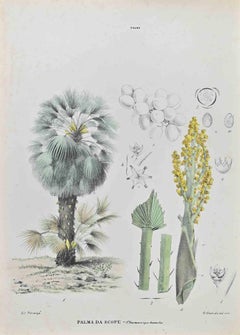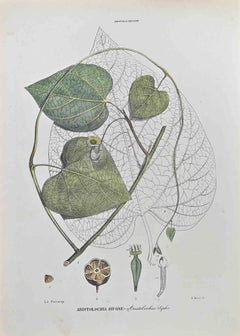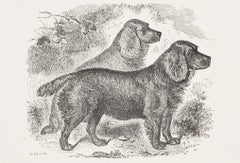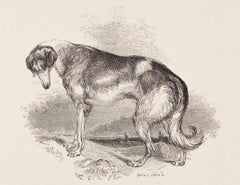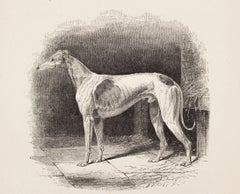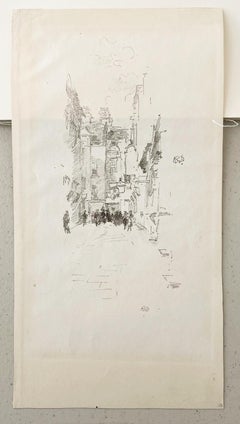Late 19th Century Prints and Multiples
Modern Late 19th Century Prints and Multiples
Lithograph
Modern Late 19th Century Prints and Multiples
Lithograph
Naturalistic Late 19th Century Prints and Multiples
Etching
Naturalistic Late 19th Century Prints and Multiples
Etching
Naturalistic Late 19th Century Prints and Multiples
Etching
Late 19th Century Prints and Multiples
Lithograph
Realist Late 19th Century Prints and Multiples
Etching, Aquatint
Art Nouveau Late 19th Century Prints and Multiples
Lithograph
Late 19th Century Prints and Multiples
Lithograph
Realist Late 19th Century Prints and Multiples
Lithograph
Art Nouveau Late 19th Century Prints and Multiples
Paper, Lithograph
Art Nouveau Late 19th Century Prints and Multiples
Lithograph
French School Late 19th Century Prints and Multiples
Etching
Late 19th Century Prints and Multiples
Lithograph
Art Nouveau Late 19th Century Prints and Multiples
Lithograph
Art Nouveau Late 19th Century Prints and Multiples
Lithograph
Modern Late 19th Century Prints and Multiples
Lithograph
Other Art Style Late 19th Century Prints and Multiples
Wood
Late 19th Century Prints and Multiples
Drypoint, Etching, Aquatint
Art Nouveau Late 19th Century Prints and Multiples
Lithograph
Jugendstil Late 19th Century Prints and Multiples
Lithograph
Art Nouveau Late 19th Century Prints and Multiples
Lithograph
Modern Late 19th Century Prints and Multiples
Lithograph
Modern Late 19th Century Prints and Multiples
Lithograph
Modern Late 19th Century Prints and Multiples
Lithograph
Modern Late 19th Century Prints and Multiples
Lithograph
Modern Late 19th Century Prints and Multiples
Lithograph
Modern Late 19th Century Prints and Multiples
Lithograph
Modern Late 19th Century Prints and Multiples
Lithograph
Modern Late 19th Century Prints and Multiples
Lithograph
Modern Late 19th Century Prints and Multiples
Lithograph
Modern Late 19th Century Prints and Multiples
Lithograph
Modern Late 19th Century Prints and Multiples
Lithograph
Modern Late 19th Century Prints and Multiples
Lithograph
Modern Late 19th Century Prints and Multiples
Lithograph
Modern Late 19th Century Prints and Multiples
Lithograph
Modern Late 19th Century Prints and Multiples
Lithograph
Modern Late 19th Century Prints and Multiples
Lithograph
Modern Late 19th Century Prints and Multiples
Lithograph
Modern Late 19th Century Prints and Multiples
Lithograph
Modern Late 19th Century Prints and Multiples
Lithograph
Modern Late 19th Century Prints and Multiples
Lithograph
Modern Late 19th Century Prints and Multiples
Lithograph
Modern Late 19th Century Prints and Multiples
Lithograph
Modern Late 19th Century Prints and Multiples
Lithograph
Modern Late 19th Century Prints and Multiples
Lithograph
Modern Late 19th Century Prints and Multiples
Lithograph
Modern Late 19th Century Prints and Multiples
Lithograph
Modern Late 19th Century Prints and Multiples
Lithograph
Modern Late 19th Century Prints and Multiples
Lithograph
Modern Late 19th Century Prints and Multiples
Lithograph
Modern Late 19th Century Prints and Multiples
Lithograph
Modern Late 19th Century Prints and Multiples
Lithograph
Modern Late 19th Century Prints and Multiples
Lithograph
Modern Late 19th Century Prints and Multiples
Lithograph
Modern Late 19th Century Prints and Multiples
Lithograph
Modern Late 19th Century Prints and Multiples
Lithograph
Modern Late 19th Century Prints and Multiples
Lithograph
Modern Late 19th Century Prints and Multiples
Lithograph
Modern Late 19th Century Prints and Multiples
Lithograph
Read More
Red Grooms’s 3D Tugboat Is a Chaotic, Comic Take on New York Life
The sculptural lithograph is part of the inimitable artist’s “Ruckus” series, now on view at the Brooklyn Museum.
Joan Mitchell’s Rare, Late-Career Diptych Buzzes with Life
Beneath the inky blackness, the painter’s irrepressible energy electrifies this pair of intaglio prints.
The 1stDibs Guide to Types of Abstract Art
Get to know the key movements and artists who have influenced visual culture for more than a century.
Romare Bearden’s Humanity Infuses His Bright, Bold Art
Through collage, painting and printmaking, the artist foregrounded Black life in America in revolutionary new ways.
Andy Warhol and Suzie Frankfurt’s ‘Wild Raspberries’ Cookbook Is an Artful, Fanciful Delight
This set of recipes and original prints might not make you a better chef. But it will make you smile.
Art Brings the Drama in These Intriguing 1stDibs 50 Spaces
The world’s top designers explain how they display art to elicit the natural (and supernatural) energy of home interiors.
Welcome (Back) to the Wild, Wonderful World of Walasse Ting
Americans are rediscovering the globe-trotting painter and poet, who was connected to all sorts of art movements across a long and varied career.
Shapero Modern’s Director Tells Us All about 20th-Century Prints
Tabitha Philpott-Kent knows a lot of art multiples. Here, the London gallery director talks about what makes printmaking so fabulous.
